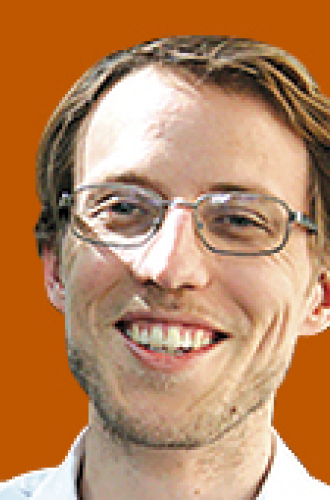-

-
-
Alex Huth's research is focused on how the many different areas in the human brain work together to perform complex tasks such as understanding natural language. Alex uses and develops computational methods in Machine Learning and Bayesian Statistics, and obtain fMRI measures of brain responses from subjects while they do real-life tasks, such as listening to a story, to better understand how the brain functions. Alex earned his PhD in Dr. Jack Gallant's laboratory through the Helen Wills Neuroscience Institute at UC Berkeley. Before that, Alex earned both his bachelor's and master's degrees in computation and neural systems (CNS) at Caltech, where he worked with Dr. Christof Koch and Dr. Melissa Saenz. He received the Burroughs Wellcome Career Award in 2016.
-
Our research is broadly concerned with how the human brain processes and represents natural world. In particular, we want to understand how language is processed and represented by the cortex, and how those representations are grounded in other modalities.The main method that we employ is the
encoding model , a mathematical model that learns to predict how the brain will respond to new stimuli (such as language) based on large amounts of data. These models can then be tested for accuracy by checking how well they can predict responses in a new dataset that they were not trained on before. In general we train and test our encoding models usingnatural stimuli such as narrative stories or books. Together, encoding models and natural stimuli give a natural gradient along which research can progress: if we can build a model that is better able to predict the brain, then we have gained some understanding of how the brain works.This work employs a wide variety of tools drawn from machine learning, natural language processing, applied mathematics, computer graphics, physics, and neuroscience. To stay on the cutting edge of these technologies, one focus of this lab is also to develop new tools and apply them to neuroscience problems. It is our long-term goal to use the neuroscience data and results to build better algorithms and smarter machines.
-
Turek, Javier S and Huth, Alexander G (2018). Efficient, sparse representation of manifold distance matrices for classical scaling. Proceedings of the IEEE Conference on Computer Vision and Pattern Recognition. (download)
de Heer, Wendy A and Huth, Alexander G and Griffiths, Thomas L and Gallant, Jack L and Theunissen, Frederic E (2017). The hierarchical cortical organization of human speech processing.. Journal of Neuroscience. doi: 10.1523/JNEUROSCI.3267-16.2017
Huth, Alexander G and Lee, Tyler and Nishimoto, Shinji and Bilenko, Natalia Y and Vu, An T and Gallant, Jack L (2016). Decoding the semantic content of natural movies from human brain activity. Frontiers in systems neuroscience. doi: 10.3389/fnsys.2016.00081
Huth, Alexander G and de Heer, Wendy A and Griffiths, Thomas L and Theunissen, Frederic E and Gallant, Jack L (2016). Natural speech reveals the semantic maps that tile human cerebral cortex. Nature. doi: 10.1038/nature17637
-














